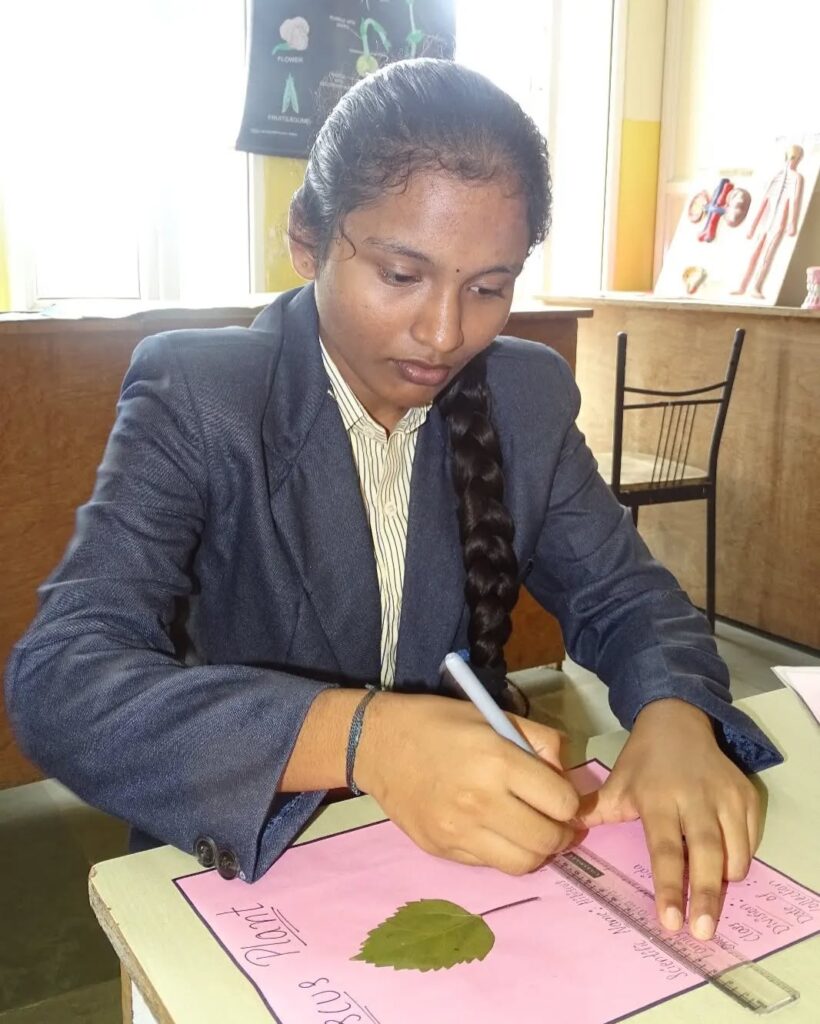BiPC Students Create Herbarium Sheets at TJIS: A Practical Approach to Learning Biological Classification
At TJIS, we believe that real-world application enhances learning and brings classroom lessons to life. Recently, our BiPC (Biology, Physics, Chemistry) students were involved in an exciting project that exemplified this belief. As part of their exploration of the chapter Biological Classification, the students were tasked with creating herbarium sheets, with a specific focus on Taxonomic Aids. This hands-on activity not only enhanced their theoretical understanding but also developed their skills in plant identification and preservation.
BiPC Students Create Herbarium Sheets at TJIS:
Introduction to the Project
BiPC Students Create Herbarium Sheets at TJIS. Biological classification is a fundamental aspect of studying life sciences. In this chapter, students explore how organisms are classified into various groups and hierarchies based on their characteristics. Taxonomic aids, which are tools used to study and categorize different species, play a crucial role in this process. To provide students with a deeper understanding of these concepts, the Department of Biology at TJIS designed a practical assignment that allowed them to actively engage with the subject matter.
The project required students to create herbarium sheets, a classic method of preserving plant specimens that has been used for centuries by botanists.BiPC Students Create Herbarium Sheets at TJIS. The herbarium sheet serves as both a learning tool and a scientific record, allowing students to preserve plant samples and document their observations. By participating in this assignment, students were able to apply their classroom knowledge to real-world scenarios, making learning both meaningful and enjoyable.
The Process of Creating Herbarium Sheets
The first step in the project involved collecting plant specimens. Our BiPC students took a tour around the school premises, where they identified and gathered various leaves from different plants. This activity provided them with a hands-on opportunity to observe and interact with plant species found in their immediate environment. It also allowed them to apply their knowledge of plant taxonomy in the field, identifying key features of each plant that helped them classify it.
Once the leaves were collected, the next step was to mount them onto herbarium sheets. This required great care and attention to detail, as the leaves had to be carefully adhered to the sheet without damaging them. The students used appropriate adhesives to ensure the leaves were flat and well-preserved. This process not only required precision but also patience, as each leaf had to be handled delicately to prevent tearing or other forms of damage.
Alongside the leaves, each herbarium sheet featured a detailed label providing essential information about the plant specimen. The label included the scientific name of the plant, its common name, the date and location of collection, and any relevant taxonomic details. BiPC Students Create Herbarium Sheets at TJIS. This information was crucial for documenting the plant’s identity and taxonomic classification. Additionally, the students documented the taxonomic hierarchy of each plant, ranging from the kingdom down to the species level.



Learning Through Hands-On Experience
BiPC Students Create Herbarium Sheets at TJIS. This project provided students with a unique opportunity to learn through experience. By collecting and preserving their own plant specimens, students were able to gain a much deeper understanding of the principles of biological classification. They learned to identify key features of different plants, such as leaf shape, texture, and arrangement, which helped them classify the plants according to the taxonomic hierarchy.
In addition to enhancing their theoretical knowledge, students also developed valuable practical skills through this assignment. Creating herbarium sheets required them to follow a scientific process that mirrored the work of professional botanists. This experience gave them insight into how plants are studied and classified in the real world, making the abstract concepts they learned in class more tangible and relatable.
Furthermore, by labeling their specimens with both the scientific and common names of the plants, students learned about the importance of scientific nomenclature. This helped them understand why scientists use Latin names to classify organisms, ensuring consistency and accuracy across different regions and languages.
Skills Developed
One of the key benefits of this project was the development of practical skills in plant identification and preservation. By handling and observing different plant specimens, students sharpened their observation skills, learning to notice subtle differences between plant species. They also gained experience in using taxonomic aids, such as identification keys and field guides, to help them classify the plants they collected.
The process of creating herbarium sheets also taught students the importance of careful documentation. Each plant specimen had to be labeled with precise information, including its taxonomic classification. This required students to research each plant thoroughly and ensure the accuracy of their labels. In doing so, they developed important research and documentation skills that will serve them well in future scientific endeavors.BiPC Students Create Herbarium Sheets at TJIS.
In addition to these technical skills, the project also fostered creativity and critical thinking. Students had to think carefully about how to mount their specimens in a way that preserved the integrity of the leaves while also presenting them clearly on the herbarium sheet. They also had to consider how best to organize the information on their labels, ensuring that it was both informative and easy to understand.
The Importance of Hands-On Learning
At TJIS, we are committed to providing our students with a well-rounded education that goes beyond textbooks and lectures. Hands-on learning experiences like this herbarium project are an integral part of our teaching approach. By engaging students in practical activities, we help them develop a deeper understanding of the subject matter while also building important skills that will serve them in the future.
This project also demonstrated the value of interdisciplinary learning. While the focus of the assignment was on biological classification, students also developed skills in research, documentation, and creative thinking. They learned how to apply their scientific knowledge to a real-world task, and in doing so, they gained a greater appreciation for the relevance of their studies.
Conclusion
BiPC Students Create Herbarium Sheets at TJIS. The herbarium project was a resounding success, not only for the knowledge it imparted but also for the skills it helped students develop. Through this hands-on activity, BiPC students at TJIS gained valuable experience in plant identification, preservation, and classification. They also had the opportunity to apply their theoretical knowledge in a practical setting, making their learning experience more meaningful and enjoyable.
As we continue to provide our students with opportunities to engage in hands-on learning, we are confident that they will develop the skills and knowledge they need to succeed in their academic and professional pursuits. The Department of Biology at TJIS is proud of the students’ efforts and looks forward to organizing more such projects that inspire learning and discovery.
